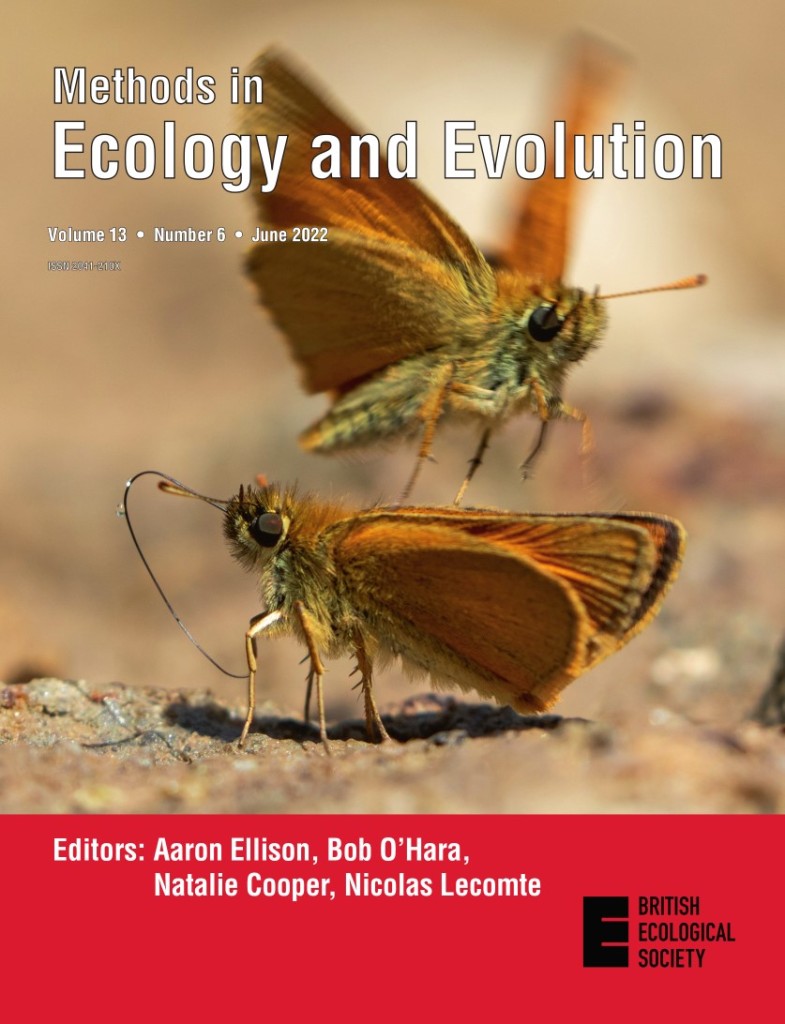Our June Issue is now online! This issue contains 16 brilliant articles about the latest methods in ecology and evolution, including methods for extracting forest information from LiDAR data, digitising wood samples, optimising stable isotope sampling design and much more!
Read on to find out about this month’s featured articles and the article behind our butterfly cover.
Featured Articles
treetop Individual tree detection and crown delineation are two of the most relevant methods for extracting detailed and reliable forest information from LiDAR (Light Detection and Ranging) datasets. The development of accessible tools for 3D forest characterisation can facilitate rapid assessment by stakeholders lacking a remote sensing background, thus fostering the practical use of LiDAR datasets in forest ecology and conservation. Here, Silva et al. introduce the treetop application, a LiDAR analysis tool for extracting forest structural information at the tree level, including cutting-edge analyses of properties related to forest ecology and management.
CaptuRING Standard procedures to obtain high-quality images of wood samples have become a bottleneck in the digitisation of dendrochronology. Digitisation is currently dominated by flatbed scanners, but the use of these devices is limited by sample length and surface flatness. Free open-source software and hardware has emerged as an alternative to create research tools that combine reduced costs with high reliability. Here, García-Hidalgo et al. present CaptuRING, an open-source tool for wood sample digitisation combining a do-it-yourself hardware based on Arduino® with a DSLR camera and a free open-source software with an easy-to-use graphical user interface.
Size and motility measurement of aquatic invertebrates In situ observation of traits of aquatic organisms, including size and motility, requires 3D measurements that are commonly done with a stereoscopic imaging system. However, to observe traits of small aquatic invertebrates, the imaging system requires relatively high magnification, which results in a small overlapping volume between the two cameras of a conventional stereoscopic system. Here, Lertvilai & Jaffe implement a stereoscopic system that utilises a tilted lens approach, known as the Scheimpflug principle, to increase the common imaging volume of two cameras. The system was calibrated and tested in the laboratory and then deployed in a saltmarsh to observe water boatmen Trichocorixa californica.
Optimising stable isotope sampling design Modern stable isotope research can benefit from the implementation of robust statistical analyses and well-designed sampling approaches to improve geographic assignment interpretation. Here, Contina et al. employ hydrogen stable isotope simulations to study inferences regarding the probability of origin of migratory individuals and reveal gaps in sampling efforts while highlighting uncertainties of assignment model extrapolations. They present an integrative approach that explores multiple sampling strategies across species with different geographic ranges to understand advantages and limitations of animal movement inferences based on stable isotope data.
Single-fit bootstrapping In many environmental and ecological settings, the analysis of data involves calculation of a confidence interval for a nonlinear function of the model parameters. In the frequentist approach, this is often achieved by using a Wald interval in which the standard error of the estimate of the function is obtained using the delta method. The purpose of this paper by Fletcher & Jowettis is to promote a simple alternative to the delta method that will provide better coverage properties when the estimates of the model parameters have a distribution that is approximately multivariate normal, as will be the case asymptotically for maximum likelihood estimates in regular models.
The Butterflies on the Cover
This month’s cover shows a group of small skippers, Thymelicus sylvestris, soaking up water and minerals at a small puddle. Individuals from the same population generally differ in their behaviour and such individual differences have sparked a lot of attention in behavioural ecology. Variance decomposition using mixed effects statistical models offer a versatile tool for the analysis of individual differences, and in particular, the repeatability R has become a popular metric. However, individual differences do not need to be constant across environments, since individuals often respond differently in different environments. When such individual-by-environment interactions (IxE) are present, standard variance decomposition does not provide a single metric that efficiently describes the magnitude of individual differences. In this issue, Schielzeth & Nakagawa suggest a solution to how individual differences can be captured when IxE are present. Their article also gives guidance for comprehensive reporting. This new statistical framework will hopefully provide the basis for future studies on complex patterns of individual differences – maybe at some point also in small skippers. Photo credit: ©Holger Schielzeth






